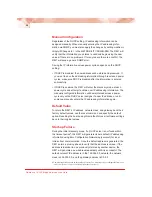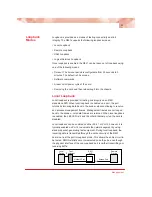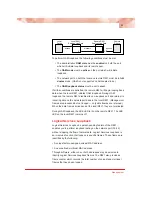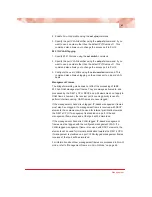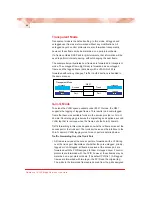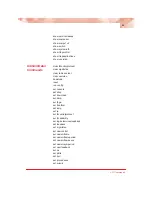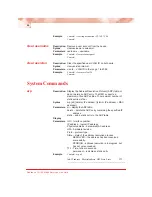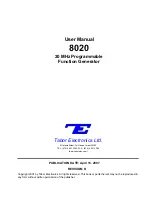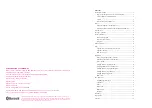
41
Management
For example, if Port 2’s priority is set to 2 and the p-bits model is Provider
Bridge, then an untagged frame entering Port 2 will be assigned a priority
of 2. According to the Provider Bridge model, priority 2 is mapped to
queue 1, and so the frame will be processed at that priority level. Later, if
you change the p-bits model to IEEE 802.1D and keep the priority at 2,
then an untagged frame entering Port 2 will be mapped to queue 0,
because priority 2 is mapped to queue 0 under the 802.1D model.
Free Form Settings
The R821 provides four DSCP models and two p-bit models that match
pre-defined bits to a particular queue. The R821 also provides a Free
Form option that gives you the ability to individually map any DSCP or p-
bit value to one of the four queues.
When Free Form is specified, the R821 starts with the last configured
settings. For this reason, it is best to begin with the model that has the
closest resemblance your preferred settings. For example, if Expedited
Forwarding (EF) was the selected model before Free Form was
specified, all the DSCP bits will start with the EF mappings. From there,
you can make changes to individual bit values.
DSCP Free Form Configuration
1. Enable DSCP and set the model to Free Form (FF).
2. Specify the six binary DSCP bits you want to configure.
3. Specify the queue that will be mapped to the bits specified in the
previous step.
Example
:
This example shows how to map the DSCP bits 000111
and 001000 to queue 3.
Console> set dscp enable model FF
Console> set freeform dscp 000111 queue 3
Console> set freeform dscp 001000 queue 3
P-Bits (IEEE 802.1p) Free Form Configuration
1. Enable p-bits and set the model to Free Form (FF).
2. Specify the three binary p-bits you want to configure.
3. Specify the queue that will be mapped to the bits specified in the
previous step.
Example
:
This example shows how to set the p-bits 010 to queue 2,
and p-bits 100 to queue 4.


